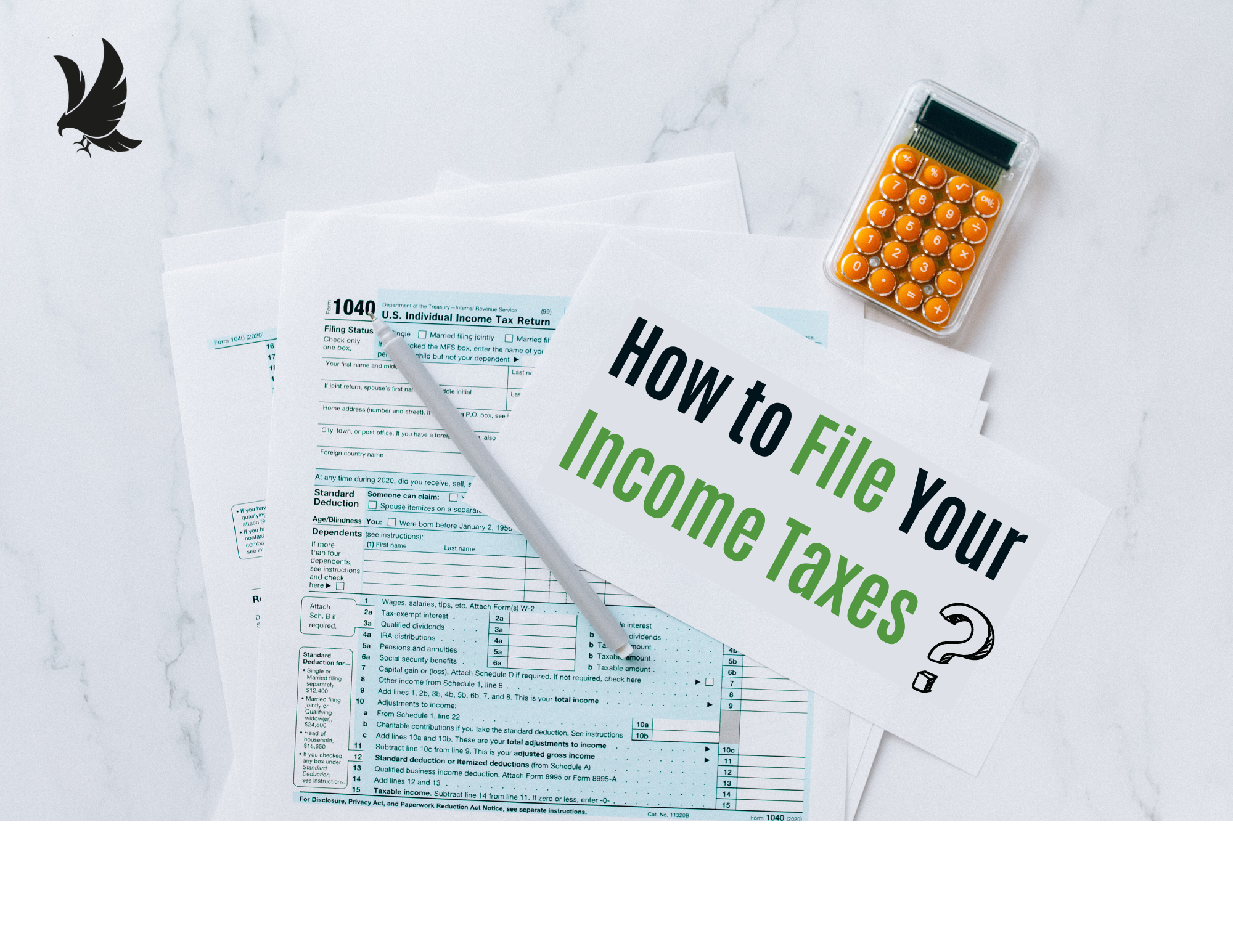What the Tax Deadline Means and Who It Applies For: Your Ultimate Guide for 2025
As we approach the end of 2024 and look ahead to the 2025 tax season, understanding the intricacies of tax deadlines becomes crucial for every American taxpayer. Whether you’re a seasoned filer or new to the world of taxes, this comprehensive guide will walk you through everything you need to know about tax deadlines, who they apply to, and how to navigate the complex landscape of tax filing.
Introduction: The Importance of Tax Deadlines

Tax deadlines are more than just dates on a calendar; they represent a critical juncture in the financial year for both individuals and the government. The Internal Revenue Service (IRS) sets these deadlines to ensure a smooth flow of tax revenue and to give taxpayers a clear timeline for fulfilling their civic duty.
Understanding tax deadlines is essential for several reasons:
- Avoiding Penalties: Missing deadlines can result in hefty fines and interest charges.
- Financial Planning: Knowing when taxes are due helps in budgeting and financial planning.
- Legal Compliance: Meeting deadlines keeps you in good standing with tax authorities.
- Stress Reduction: Being prepared and on time reduces the anxiety associated with tax filing.
As we look ahead to the 2025 tax season, it’s important to note that the formal start date for filing 2024 taxes is typically in late January 2025. The IRS usually announces the exact date in the preceding December, so keep an eye out for this announcement in December 2024.
“The tax system is complex, and the rules are always changing. Staying informed about deadlines is your first line of defense against potential issues.” – IRS Commissioner
In the following sections, we’ll delve deep into what these deadlines mean, who they apply to, and how you can ensure you’re always on the right side of tax law.
Understanding the Tax Deadline
What Is the Tax Deadline and Why Does It Matter?
The tax deadline is the final date by which individual taxpayers must file their annual tax returns or request an extension. This date is crucial as it marks the end of the tax year and the point at which the IRS begins to assess penalties for late filing and payment.
For the 2024 tax year (filing in 2025), the standard deadline remains April 15, 2025. However, it’s important to note that this date can shift due to weekends or holidays.
Here’s a breakdown of key dates for the upcoming tax season:
| Event | Date |
|---|---|
| Standard Tax Deadline | April 15, 2025 |
| Maine & Massachusetts Deadline | April 17, 2025* |
| Deadline for Extension Requests | April 15, 2025 |
| Extended Filing Deadline | October 15, 2025 |
*Note: The extended deadline for Maine and Massachusetts is due to the Patriots’ Day holiday.
Special Circumstances Affecting Deadlines
- Natural Disasters: The IRS often provides automatic extensions for victims of federally declared disasters. For instance, in recent years, areas affected by hurricanes or severe storms have received extensions.
- Military Personnel: Active duty military members serving in combat zones typically receive an automatic extension of 180 days after leaving the combat zone.
- U.S. Citizens Living Abroad: Expatriates generally have an automatic two-month extension to June 15, though interest still accrues on any unpaid taxes from April 15.
“While extensions are available, it’s crucial to understand that an extension to file is not an extension to pay. Any taxes owed are still due by the original deadline.” – TurboTax Tax Expert
Consequences of Missing the Deadline
Failing to meet the tax deadline can result in serious financial repercussions:
- Failure-to-File Penalty: 5% of unpaid taxes for each month your return is late, up to 25%.
- Failure-to-Pay Penalty: 0.5% of unpaid taxes each month, up to 25%.
- Interest: Accrues on unpaid taxes, currently at a rate of 3% annually, compounded daily.
These penalties can quickly add up, making it financially prudent to file on time, even if you can’t pay the full amount owed immediately.
For more detailed information on penalties and interest, visit the IRS Penalties and Interest page.
Understanding the tax deadline and its implications is the first step in ensuring compliance with tax laws. In the next section, we’ll explore who exactly needs to file taxes and how these deadlines apply to different groups of taxpayers.
Who Needs to File Taxes?

Understanding who needs to file taxes is crucial for compliance with IRS regulations. While the tax deadline applies broadly, the specific requirements for filing can vary based on several factors, including income, age, and filing status.
Individual Taxpayers
Most U.S. citizens and resident aliens are required to file federal income tax returns if their income exceeds certain thresholds. For the 2024 tax year (filing in 2025), these thresholds are as follows:
| Filing Status | Age | Income Threshold |
|---|---|---|
| Single | Under 65 | $13,850 |
| Single | 65 or older | $15,700 |
| Married Filing Jointly | Both under 65 | $27,700 |
| Married Filing Jointly | One spouse 65 or older | $29,200 |
| Married Filing Jointly | Both 65 or older | $30,700 |
| Head of Household | Under 65 | $20,800 |
| Head of Household | 65 or older | $22,650 |
Note: These figures are based on the 2023 tax year and are subject to adjustment for inflation for the 2024 tax year.
It’s important to note that even if you fall below these thresholds, you may still need to file if you meet certain conditions, such as owing special taxes or receiving advance premium tax credits for health insurance.
Self-Employed Individuals and Independent Contractors
Self-employed individuals and independent contractors have different filing requirements. If your net earnings from self-employment were $400 or more, you’re required to file a tax return. This includes:
- Freelancers
- Gig economy workers
- Small business owners
- Independent consultants
These individuals typically need to file Schedule C (Form 1040) to report income or loss from their business. They may also need to pay self-employment tax using Schedule SE.
“Self-employed individuals often overlook estimated tax payments, which can lead to penalties. It’s crucial to understand and meet quarterly tax obligations.” – National Association for the Self-Employed
Small Business Owners
Small business owners, regardless of the business structure, generally need to file annual tax returns. The specific forms required depend on the business entity:
- Sole Proprietorships: File Schedule C with their personal Form 1040
- Partnerships: File Form 1065
- S Corporations: File Form 1120-S
- C Corporations: File Form 1120
Small business owners should be aware of additional filing requirements, such as employment taxes if they have employees.
Corporations
Both C corporations and S corporations have specific filing requirements:
- C Corporations: Must file Form 1120 by the 15th day of the 4th month after the end of their tax year. For calendar year corporations, this is typically April 15.
- S Corporations: File Form 1120-S by the 15th day of the 3rd month after the end of their tax year, usually March 15 for calendar year corporations.
Partnerships and LLCs
Partnerships and multi-member LLCs typically file Form 1065 by March 15 for calendar year businesses. However, single-member LLCs are usually treated as sole proprietorships for tax purposes and file Schedule C with their personal return.
Non-Profit Organizations
Tax-exempt organizations, including charities and religious organizations, generally must file Form 990 series returns. The specific form and deadline depend on the organization’s gross receipts and total assets.
For more detailed information on filing requirements for different types of organizations, visit the IRS Tax Information for Businesses page.
Understanding who needs to file taxes is just the beginning. In the next section, we’ll explore the key dates and deadlines that these various groups need to be aware of throughout the tax year.
Key Dates and Deadlines

Understanding the various tax deadlines throughout the year is crucial for proper financial planning and compliance. While April 15 is the most well-known tax date, there are several other important deadlines to keep in mind.
Standard Tax Filing Deadline
The standard deadline for filing individual tax returns (Form 1040) for the 2024 tax year is April 15, 2025. This date applies to most individual taxpayers, regardless of whether they owe taxes or expect a refund.
Important: If April 15 falls on a weekend or holiday, the deadline is moved to the next business day.
Extended Deadlines for Certain Taxpayers
Some taxpayers may have different deadlines:
- Maine and Massachusetts Residents: Due to the Patriots’ Day holiday, residents of these states typically have until April 17, 2025, to file their federal tax returns.
- Disaster Victims: The IRS often provides automatic extensions for victims of federally declared disasters. For example, in recent years, areas affected by hurricanes or severe storms have received extensions.
- U.S. Citizens and Resident Aliens Living Abroad: These individuals generally have an automatic 2-month extension to June 15, 2025. However, any taxes owed are still due by April 15 to avoid interest charges.
Quarterly Estimated Tax Payment Due Dates
For those who are self-employed or have income not subject to withholding, quarterly estimated tax payments are crucial. The due dates for the 2024 tax year are:
| Quarter | Due Date |
|---|---|
| 1st Quarter (Jan 1 – Mar 31) | April 15, 2024 |
| 2nd Quarter (Apr 1 – May 31) | June 17, 2024 |
| 3rd Quarter (Jun 1 – Aug 31) | September 16, 2024 |
| 4th Quarter (Sep 1 – Dec 31) | January 15, 2025 |
“Staying on top of quarterly payments is crucial for avoiding underpayment penalties. Set reminders and budget accordingly.” – American Institute of CPAs (AICPA)
Business Tax Deadlines
Different business entities have varying tax deadlines:
- S Corporations: March 15, 2025
- Partnerships: March 15, 2025
- C Corporations: April 15, 2025 (for calendar year filers)
State Tax Return Deadlines
While many states align their tax deadlines with the federal deadline, some have different dates. It’s crucial to check with your state’s tax authority for specific deadlines. Here are a few examples:
- California: Generally aligns with the federal deadline (April 15, 2025)
- Virginia: May 1, 2025
- Louisiana: May 15, 2025
For a comprehensive list of state tax deadlines, visit the Federation of Tax Administrators website.
Extension Deadlines
If you need more time to file your tax return, you can request an automatic six-month extension by filing Form 4868. For the 2024 tax year:
- Extension Request Deadline: April 15, 2025
- Extended Filing Deadline: October 15, 2025
Remember: An extension to file is not an extension to pay. Any taxes owed are still due by the original April 15 deadline to avoid penalties and interest.
Other Important Tax Dates
- January 31, 2025: Deadline for employers to send W-2 forms to employees and for businesses to send 1099 forms to contractors
- February 18, 2025: IRS Free File opens for taxpayers with incomes below $73,000 (subject to change for 2024 tax year)
- October 1, 2025: FAFSA (Free Application for Federal Student Aid) becomes available for the 2026-2027 academic year
Understanding these key dates and deadlines is essential for effective tax planning and compliance. In the next section, we’ll explore the various methods available for filing your taxes, ensuring you’re well-prepared for the upcoming tax season.
How to File Your Income Taxes

Filing your income taxes can seem daunting, but with the right approach and tools, it can be a manageable process. This section will guide you through the various methods available for filing your taxes, helping you choose the option that best suits your needs.
Gathering Your Documents
Before you begin the filing process, it’s crucial to gather all necessary documents. This preparation can significantly streamline your tax filing experience.
Essential documents include:
- W-2 forms from employers
- 1099 forms for miscellaneous income
- 1098 forms for mortgage interest
- Receipts for deductible expenses
- Previous year’s tax return
Pro Tip: Create a dedicated “tax folder” at the beginning of each year to collect these documents as you receive them.
Filing Options
1. IRS Free File and Direct File
The IRS offers free filing options for eligible taxpayers:
- IRS Free File: Available for taxpayers with annual incomes of $73,000 or less (as of 2023, subject to change for 2024)
- IRS Direct File: A pilot program launched in 2023, expected to expand in 2024-2025
Benefits of IRS Free File:
- Cost-effective
- User-friendly guided preparation
- Secure e-filing
For more information, visit the IRS Free File page.
2. Tax Software
Commercial tax software offers a balance of convenience and comprehensive guidance. Popular options include:
- TurboTax
- H&R Block
- TaxAct
- TaxSlayer
Comparison of Popular Tax Software (2024 Prices)
| Software | Basic Version | Deluxe Version | Premium Version |
|---|---|---|---|
| TurboTax | $0 (Free Edition) | $59 | $89 |
| H&R Block | $0 (Free Online) | $49.99 | $69.99 |
| TaxAct | $0 (Free Edition) | $24.95 | $34.95 |
| TaxSlayer | $0 (Simply Free) | $17.95 | $37.95 |
Note: Prices are subject to change. Check the official websites for the most current pricing.
3. Government Tax Assistance Programs
For eligible individuals, the IRS offers free tax preparation services:
- Volunteer Income Tax Assistance (VITA): For those who make $60,000 or less, have disabilities, or have limited English proficiency
- Tax Counseling for the Elderly (TCE): Specializes in questions about pensions and retirement-related issues for those 60 and older
- MiliTax: Free tax services for military members and their families
To find a VITA or TCE site near you, use the VITA Locator Tool.
4. Consulting a Tax Professional
For complex tax situations, consulting a tax professional can be invaluable. Consider this option if you:
- Have multiple sources of income
- Own a business
- Have significant investments or rental properties
- Experienced major life changes (marriage, divorce, new child)
Types of Tax Professionals:
- Certified Public Accountants (CPAs)
- Enrolled Agents (EAs)
- Tax Attorneys
“While it may cost more upfront, a tax professional can potentially save you money by identifying deductions and credits you might have missed.” – American Association of Attorney-Certified Public Accountants
E-filing vs. Paper Filing
While e-filing has become the norm, some taxpayers still prefer paper filing. Here’s a comparison:
E-filing:
- Faster processing
- Quicker refunds
- Lower error rate
- Immediate confirmation of receipt
Paper Filing:
- Necessary for certain forms not accepted electronically
- Preferred by some for privacy concerns
Did You Know? In 2023, over 90% of individual tax returns were e-filed, according to the IRS.
Filing Tips
- Start Early: Don’t wait until the last minute
- Double-Check Your Information: Ensure all Social Security numbers, names, and addresses are correct
- Keep Copies: Save a copy of your filed return for your records
- Use Direct Deposit: For faster refunds, opt for direct deposit
- Consider State Taxes: Don’t forget to file your state tax return if required
By understanding these filing options and following best practices, you can approach tax season with confidence. In the next section, we’ll delve into key considerations for preparing your tax return, ensuring you maximize your deductions and credits.
Preparing Your Tax Return

Proper preparation is key to accurately filing your taxes and maximizing your potential refund. This section will guide you through important considerations and strategies for preparing your tax return.
Key Considerations for Tax Preparation
1. Tax Credits and Deductions
Understanding available tax credits and deductions can significantly impact your tax liability. Here are some key credits and deductions to consider for the 2024 tax year:
Common Tax Credits:
- Earned Income Tax Credit (EITC)
- Child Tax Credit
- American Opportunity Tax Credit (for education expenses)
- Lifetime Learning Credit
- Retirement Savings Contributions Credit (Saver’s Credit)
Popular Deductions:
- Standard Deduction
- Itemized Deductions (if they exceed the standard deduction)
- Student Loan Interest Deduction
- Charitable Contributions
- Medical Expenses (exceeding 7.5% of AGI)
- State and Local Taxes (SALT) Deduction (capped at $10,000)
“Don’t overlook lesser-known deductions like the home office deduction for self-employed individuals or the educator expense deduction for teachers.” – National Association of Tax Professionals
2. Choosing Between Standard and Itemized Deductions
For the 2024 tax year, the standard deduction is expected to be:
| Filing Status | Standard Deduction |
|---|---|
| Single | $13,850 |
| Married Filing Jointly | $27,700 |
| Head of Household | $20,800 |
Note: These figures are based on 2023 and may be adjusted for inflation for the 2024 tax year.
When to Itemize:
- If your total itemized deductions exceed the standard deduction
- Common itemized deductions include mortgage interest, charitable donations, and state and local taxes
Pro Tip: Use tax software or consult a tax professional to determine which option is best for your situation.
3. Selecting the Right Tax Filing Status
Your filing status can significantly impact your tax liability. The five filing statuses are:
- Single
- Married Filing Jointly
- Married Filing Separately
- Head of Household
- Qualifying Widow(er)
Case Study: Impact of Filing Status
Consider a married couple with a combined income of $100,000:
| Filing Status | Tax Liability |
|---|---|
| Married Filing Jointly | $13,479 |
| Married Filing Separately | $15,604 (combined) |
This example illustrates how choosing the right filing status can lead to substantial tax savings.
Last-Minute Filing Tips
If you’re preparing your return close to the deadline, keep these tips in mind:
- Utilize Free File Fillable Forms: If you’re comfortable with tax forms, use the IRS Free File Fillable Forms for a quick, free filing option.
- Consider Filing an Extension: If you need more time, file Form 4868 for an automatic six-month extension. Remember, this extends your filing deadline, not your payment deadline.
- Make IRA Contributions: You have until the tax filing deadline to make IRA contributions for the previous tax year.
- Review for Common Errors: Double-check for math errors, incorrect Social Security numbers, and forgotten signatures.
- Don’t Rush: Rushing can lead to mistakes. If needed, file an extension and take the time to prepare your return accurately.
Organizing Tax Documents
Maintaining an organized system for tax documents can save time and reduce stress. Consider:
- Using a digital filing system or cloud storage for easy access
- Categorizing receipts and documents by type (income, deductions, investments, etc.)
- Keeping a running list of tax-related events throughout the year
Recommended Document Retention Periods:
| Document Type | Retention Period |
|---|---|
| Tax Returns | 7 years |
| W-2 Forms | 7 years |
| 1099 Forms | 7 years |
| Bank Statements | 7 years |
| Investment Records | 7 years after selling |
| Home Purchase/Sale Documents | 7 years after sale |
“Good record-keeping is the foundation of stress-free tax preparation. It’s not just about this year’s taxes, but being prepared for potential future audits as well.” – American Institute of CPAs (AICPA)
Utilizing Tax Preparation Software Effectively
If you’re using tax preparation software, follow these tips for optimal results:
- Enter Information Accurately: Double-check all entries for accuracy.
- Use the Interview Process: Many software packages offer a guided interview process to ensure you don’t miss any deductions or credits.
- Take Advantage of Import Features: Many software options can import W-2 and 1099 information directly from employers and financial institutions.
- Review the Entire Return: Before filing, review each section of your return for completeness and accuracy.
- Save and Print a Copy: Keep a digital and physical copy of your completed return for your records.
Understanding Tax Forms
Familiarizing yourself with common tax forms can streamline your preparation process:
- Form 1040: The standard form for individual income tax returns
- Schedule A: Used for itemizing deductions
- Schedule B: For reporting interest and dividend income
- Schedule C: Used by self-employed individuals to report business income and expenses
- Schedule D: For reporting capital gains and losses
- Schedule E: Used for reporting rental property and royalty income
For a comprehensive list of tax forms and their purposes, visit the IRS Forms and Publications page.
Seeking Professional Help
While many taxpayers can successfully prepare their own returns, certain situations may warrant professional assistance:
- Complex investments or rental properties
- Self-employment or business ownership
- Major life changes (marriage, divorce, new child)
- Inheritance or large gifts
- Foreign income or assets
When choosing a tax professional, consider:
- Credentials: Look for CPAs, Enrolled Agents, or tax attorneys
- Experience: Seek professionals with experience in your specific tax situation
- Reputation: Check reviews and ask for referrals
- Availability: Ensure they’re available for questions after tax season
- Fees: Understand their fee structure upfront
By thoroughly preparing and understanding these key aspects of tax preparation, you can approach your tax return with confidence and maximize your potential refund or minimize your tax liability. In the next section, we’ll explore what to do if you can’t meet the tax deadline and need to file for an extension.
Extensions and Special Circumstances

Despite our best intentions, sometimes meeting the tax deadline can be challenging. This section will guide you through the process of filing for an extension and address special circumstances that might affect your tax filing.
How to File for an Extension
If you need more time to prepare your tax return, you can request an automatic six-month extension by filing Form 4868. Here’s what you need to know:
- Deadline: File Form 4868 by April 15, 2025 (for the 2024 tax year).
- New Deadline: With an approved extension, your new filing deadline becomes October 15, 2025.
- Filing Methods: You can file Form 4868 electronically through the IRS Free File program, tax preparation software, or by mailing a paper form.
Important: An extension to file is not an extension to pay. You must estimate your tax liability and pay any amount due by the original April 15 deadline to avoid penalties and interest.
“Filing an extension can be a smart move if you’re missing information or need more time to ensure accuracy. However, it’s crucial to estimate and pay any taxes owed to avoid penalties.” – National Association of Tax Professionals
Automatic Extensions for Certain Groups
Some taxpayers automatically receive extensions without having to file Form 4868:
- U.S. Citizens and Resident Aliens Living Abroad: Automatically receive an extra two months (until June 15) to file their returns and pay any amount due.
- Military Personnel Serving in Combat Zones: Receive an automatic extension of at least 180 days after leaving the combat zone to file and pay taxes.
- Disaster Victims: The IRS often provides automatic extensions for victims of federally declared disasters. Check the IRS disaster relief page for current information.
Natural Disasters and Other Special Circumstances
The IRS may provide tax relief for those affected by natural disasters or other extraordinary circumstances:
- Extended Deadlines: Filing and payment deadlines may be postponed.
- Casualty Losses: Special rules may apply for claiming casualty losses in federally declared disaster areas.
- Amended Returns: You may be able to claim disaster-related losses on the previous year’s return for a quicker refund.
Case Study: Hurricane Relief
In 2023, victims of Hurricane Idalia in parts of Florida, Georgia, and South Carolina received tax relief. The IRS postponed various tax filing and payment deadlines that occurred starting on August 27, 2023. Affected individuals and businesses had until February 15, 2024, to file returns and pay any taxes that were originally due during this period.
Military Personnel and Taxpayers Living Abroad

Special rules apply for military personnel and U.S. citizens living overseas:
Military Personnel:
- Combat Zone Extensions: Automatic 180-day extension after leaving a combat zone
- Earned Income Exclusion: Certain combat pay can be excluded from taxable income
- Moving Expense Deduction: Still available for military moves, despite being suspended for most taxpayers
U.S. Citizens Living Abroad:
- Automatic Two-Month Extension: Until June 15 to file and pay
- Foreign Earned Income Exclusion: May be able to exclude up to $120,000 (2023 figure, adjusted annually) of foreign earnings
- Foreign Tax Credit: Credit for taxes paid to foreign countries
For more detailed information, refer to IRS Publication 54 for U.S. citizens abroad and IRS Publication 3 for armed forces personnel.
Implications of Filing for an Extension
While filing for an extension can provide needed time, it’s important to understand the implications:
- Interest Accrual: Interest on unpaid taxes begins accruing from the original due date, even with an extension.
- Late Payment Penalty: If you don’t pay at least 90% of your tax liability by the original deadline, you may face a late payment penalty.
- Delayed Refund: If you’re owed a refund, filing an extension delays its processing.
- State Tax Considerations: An extension for federal taxes doesn’t automatically extend your state tax deadline. Check with your state tax authority for their specific rules.
- Impact on Financial Aid: If you’re applying for financial aid, an extension may delay the processing of your FAFSA (Free Application for Federal Student Aid).
Tips for Managing an Extension
If you do need to file for an extension, follow these best practices:
- Estimate Your Tax Liability: Use last year’s return and current year information to estimate what you owe.
- Pay as Much as Possible: Even if you can’t pay the full amount, paying part of your estimated tax liability can reduce penalties and interest.
- Consider an Installment Agreement: If you can’t pay in full, you may be eligible for a payment plan with the IRS.
- Don’t Delay Further: Use the extra time wisely to gather all necessary information and prepare an accurate return.
- Keep Records: Maintain documentation of when and how you filed for the extension.
“While an extension gives you more time to file, it’s crucial to use this time effectively. Procrastination can lead to rushed preparation and potential errors.” – Enrolled Agents Association
Special Situations Requiring Extra Attention
Certain life events or financial situations may complicate your tax filing and potentially necessitate an extension:
- Death of a Spouse: If your spouse passed away during the tax year, you may need extra time to sort out financial matters.
- Divorce: Separating finances and determining filing status can be complex.
- Starting a Business: New business owners may need additional time to organize financial records.
- Major Investments or Sales: Significant financial transactions might require more time to calculate gains or losses accurately.
- Identity Theft: If you’ve been a victim of identity theft, resolving issues with the IRS may delay your ability to file.
For these situations, consider consulting a tax professional for guidance.
Preparing for Next Year
While dealing with an extension for this year, start preparing for next year’s taxes:
- Organize Documents: Set up a system to collect and organize tax documents throughout the year.
- Adjust Withholdings: If you owed a significant amount, consider adjusting your withholdings using the IRS Tax Withholding Estimator.
- Make Estimated Payments: If you have significant non-wage income, make quarterly estimated tax payments to avoid underpayment penalties.
- Schedule a Mid-Year Tax Check-up: Review your tax situation halfway through the year to identify any potential issues early.
By understanding the extension process and special circumstances that might affect your tax filing, you can navigate these situations more confidently. Remember, while extensions provide more time to file, they don’t extend the time to pay. Always strive to pay your estimated tax liability by the original deadline to minimize penalties and interest.
In the next section, we’ll explore various payment options available for those who owe taxes, ensuring you can fulfill your tax obligations in the most convenient and efficient manner possible.
Payment Options

Understanding your payment options is crucial, whether you’re paying your taxes by the original deadline or after filing an extension. This section will guide you through the various methods available for paying your tax bill and what to do if you can’t pay in full.
Electronic Payment Methods
The IRS offers several electronic payment options, which are generally the fastest and most secure ways to pay your taxes:
- IRS Direct Pay
- Free service for individual taxpayers
- Payments made directly from your checking or savings account
- Schedule payments up to 30 days in advance
- Access IRS Direct Pay here
- Electronic Funds Withdrawal (EFW)
- Available when e-filing your tax return
- Schedule a payment for withdrawal on a future date, up to the due date
- Credit or Debit Card
- Accepted through approved payment processors
- Convenience fees apply (usually 1.87% to 1.99% for credit cards)
- Find approved payment processors here
- Electronic Federal Tax Payment System (EFTPS)
- Free service for all taxpayers
- Ideal for businesses or individuals making frequent payments
- Requires enrollment and takes a few days to process
- Enroll in EFTPS here
“Electronic payments are not only convenient but also provide immediate confirmation of your payment, which can be crucial for avoiding penalties.” – IRS Commissioner
Traditional Payment Methods
While electronic methods are preferred, the IRS still accepts traditional payment forms:
- Check or Money Order
- Make payable to “U.S. Treasury”
- Include your name, address, phone number, Social Security number, tax year, and form number on the payment
- Mail with Form 1040-V (Payment Voucher) if you’ve already filed your return
- Cash
- Available at participating retail partners
- $1,000 daily payment limit
- Requires registration on the Official Payments website
Payment Plans and Installment Agreements
If you can’t pay your tax bill in full, the IRS offers several payment plan options:
- Short-term Payment Plan
- For individuals who can pay in full within 180 days
- No setup fee
- Interest and penalties still apply
- Long-term Payment Plan (Installment Agreement)
- For individuals who need more than 180 days to pay in full
- Setup fees apply (reduced if you opt for direct debit)
- Interest and penalties continue to accrue until the balance is paid in full
Installment Agreement Fees (as of 2024)
| Application Method | Setup Fee | Setup Fee with Direct Debit |
|---|---|---|
| Online | $31 | $0 |
| Phone, Mail, or In-Person | $107 | $54 |
Note: Low-income taxpayers may qualify for reduced or waived fees.
To apply for a payment plan, visit the IRS Payment Plan page.
Offer in Compromise
For taxpayers facing significant financial hardship, the IRS may accept less than the full amount owed through an Offer in Compromise (OIC):
- Allows you to settle your tax debt for less than the full amount owed
- Eligibility is based on your ability to pay, income, expenses, and asset equity
- Requires a $205 application fee (waived for low-income taxpayers)
- Learn more about Offer in Compromise here
Consequences of Not Paying on Time
Failing to pay your taxes by the deadline can result in significant penalties and interest:
- Failure-to-Pay Penalty: 0.5% of unpaid taxes per month, up to 25% of the unpaid amount
- Interest: Accrues daily on unpaid taxes, currently at a rate of 3% annually (rate can change quarterly)
- Additional Collection Actions: The IRS may file a tax lien, levy your assets, or garnish your wages if taxes remain unpaid
Example of Penalty and Interest Accrual
For a $5,000 tax bill left unpaid for 6 months:
- Failure-to-Pay Penalty: $150 (0.5% per month for 6 months = 3% of $5,000)
- Interest: Approximately $75 (assuming 3% annual rate)
- Total After 6 Months: $5,225
“Even if you can’t pay in full, always file your return on time and pay as much as you can. This strategy can significantly reduce penalties and interest.” – Taxpayer Advocate Service
Tips for Managing Tax Payments
- Pay Electronically: Use IRS Direct Pay or EFTPS for quick, secure payments.
- Set Up Reminders: If you opt for an installment agreement, set up automatic payments or reminders to avoid missing payments.
- Consider Your Options Carefully: Compare the costs of different payment methods. For example, paying by credit card might incur higher fees than an IRS installment agreement.
- Keep Communication Open: If your financial situation changes and you can’t make payments, contact the IRS immediately to discuss your options.
- Check State Requirements: Remember that state tax payments are separate from federal taxes. Check with your state tax agency for their specific payment options and requirements.
Special Considerations for Self-Employed Individuals
Self-employed individuals and independent contractors have additional tax payment responsibilities:
- Estimated Tax Payments: Required if you expect to owe $1,000 or more when you file your return
- Quarterly Due Dates: April 15, June 15, September 15, and January 15 of the following year
- Calculation: Use Form 1040-ES to calculate your estimated tax
Estimated Tax Payment Schedule for 2024 Income
| Payment Period | Due Date |
|---|---|
| Jan 1 – Mar 31 | April 15, 2024 |
| Apr 1 – May 31 | June 17, 2024 |
| Jun 1 – Aug 31 | September 16, 2024 |
| Sep 1 – Dec 31 | January 15, 2025 |
Using Tax Refunds Strategically
If you typically receive a tax refund, consider these options:
- Apply to Next Year’s Taxes: Use your refund as a credit towards next year’s tax liability or estimated tax payments.
- Adjust Withholdings: If you consistently receive large refunds, you may want to adjust your withholdings to have more money throughout the year.
- Direct Deposit: Choose direct deposit for faster receipt of your refund.
Planning for Future Tax Payments
To avoid payment issues in the future:
- Review Withholdings Annually: Use the IRS Withholding Estimator to ensure you’re having the right amount withheld from your paycheck.
- Save for Taxes: If you’re self-employed, set aside a portion of your income regularly for taxes.
- Consider Tax-Advantaged Accounts: Contributions to retirement accounts like 401(k)s or IRAs can reduce your taxable income.
- Keep Good Records: Accurate record-keeping can help you maximize deductions and credits, potentially reducing your tax liability.
Understanding your payment options and planning ahead can help you manage your tax obligations more effectively, reducing stress and potential financial strain. In the next section, we’ll explore the consequences of not filing by the deadline and how to address this situation if it occurs.
Consequences of Not Filing by the Deadline

While it’s always best to file your taxes on time, understanding the consequences of missing the deadline is crucial. This section will explore what happens if you don’t file by the due date and how to mitigate potential issues.
Fines and Penalties
The IRS imposes two main types of penalties for late taxes:
- Failure-to-File Penalty
- 5% of unpaid taxes for each month or part of a month the return is late
- Maximum penalty is 25% of your unpaid taxes
- If you’re more than 60 days late, the minimum penalty is $435 (for 2024 tax returns) or 100% of the tax owed, whichever is less
- Failure-to-Pay Penalty
- 0.5% of unpaid taxes for each month or part of a month the tax remains unpaid
- Maximum penalty is 25% of your unpaid taxes
Combined Penalties: If both penalties apply in the same month, the Failure-to-File penalty is reduced by the amount of the Failure-to-Pay penalty for that month, for a combined penalty of 5% per month.
“The Failure-to-File penalty is generally more severe than the Failure-to-Pay penalty. Even if you can’t pay, you should still file your return to avoid this harsher penalty.” – IRS Tax Tip 2020-60
Interest Charges
In addition to penalties, the IRS charges interest on unpaid taxes:
- Interest accrues daily and is compounded daily
- The rate is determined quarterly and is the federal short-term rate plus 3%
- As of Q1 2024, the interest rate for underpayments is 3% per year
Example Calculation
For a $10,000 tax bill left unpaid for 6 months:
| Charge | Calculation | Amount |
|---|---|---|
| Failure-to-File Penalty | 5% per month for 5 months (25% max) | $2,500 |
| Failure-to-Pay Penalty | 0.5% per month for 6 months | $300 |
| Interest (assuming 3% annual rate) | Approximately 1.5% for 6 months | $150 |
| Total Penalties and Interest | $2,950 | |
| Total Amount Due | $12,950 |
Long-Term Consequences
Beyond immediate penalties and interest, failing to file or pay taxes can have serious long-term consequences:
- Tax Liens: The IRS may file a Notice of Federal Tax Lien, which:
- Alerts creditors that the government has a legal right to your property
- Can severely damage your credit score
- May make it difficult to obtain loans or credit
- Wage Garnishment: The IRS can require your employer to send a portion of your paycheck directly to them to satisfy your tax debt.
- Asset Seizure: In severe cases, the IRS may seize your assets, including bank accounts, vehicles, or real estate.
- Passport Restrictions: If you owe more than $55,000 in taxes, the IRS can request that the State Department deny your passport application or revoke your current passport.
- Criminal Charges: While rare, in cases of willful evasion or fraud, you could face criminal charges.
Steps to Take If You’ve Missed the Deadline
If you’ve missed the filing deadline, take these steps immediately:
- File As Soon As Possible: The longer you wait, the more penalties and interest you’ll accrue.
- Pay What You Can: Even if you can’t pay the full amount, paying part of your tax bill will reduce penalties and interest.
- Request a Payment Plan: Apply for an installment agreement if you can’t pay in full.
- Consider an Offer in Compromise: If you’re facing significant financial hardship, you may be eligible to settle your tax debt for less than the full amount.
- File Past Due Returns: If you’ve missed filing for multiple years, file returns for the most recent years first.
- Seek Professional Help: A tax professional can help you navigate the process and potentially negotiate with the IRS on your behalf.
Penalty Relief Options
The IRS offers several options for penalty relief:
- First-Time Penalty Abatement: Available for the failure-to-file, failure-to-pay, or failure-to-deposit penalties if you:
- Haven’t had any penalties for the past three tax years
- Filed all required returns or filed an extension
- Paid, or arranged to pay, any tax due
- Reasonable Cause: If you can show that you failed to file or pay on time due to reasonable cause and not willful neglect. Examples include:
- Natural disasters
- Death or serious illness in the immediate family
- Inability to obtain necessary records
- Statutory Exceptions: Specific situations where penalties may be waived, such as for certain military service members or in presidentially declared disaster areas.
To request penalty relief, you can:
- Call the IRS at the number on your notice
- Submit a written request with Form 843, Claim for Refund and Request for Abatement
- Work with a tax professional to navigate the process
“Don’t assume you have to pay penalties. If you have a good reason for filing or paying late, explain your situation to the IRS. They may be more understanding than you expect.” – National Association of Tax Professionals
Preventing Future Late Filings
To avoid missing deadlines in the future:
- Set Reminders: Use digital calendars or apps to remind you of important tax dates.
- Organize Throughout the Year: Keep tax documents organized as you receive them.
- Consider Estimated Payments: If you’re self-employed or have significant non-wage income, make quarterly estimated tax payments to avoid a large bill at tax time.
- Use Tax Preparation Software: Many tax software programs offer reminders and can help you file more efficiently.
- Work with a Tax Professional: A tax preparer can help ensure you meet deadlines and maximize your deductions.
Special Situations
Certain circumstances may provide automatic extensions or penalty relief:
- Natural Disasters: The IRS often provides automatic filing and payment extensions for victims of federally declared disasters.
- Military Service: Active duty military personnel serving in combat zones typically receive automatic extensions.
- Living Abroad: U.S. citizens and resident aliens living and working abroad usually have an automatic two-month extension to file.
Always check the IRS website for the most up-to-date information on special situations and relief options.
Case Study: The Cost of Procrastination
Let’s consider a hypothetical scenario to illustrate the impact of late filing and payment:
Scenario: John owes $5,000 in taxes but doesn’t file or pay for 6 months after the deadline.
| Month | Failure-to-File Penalty | Failure-to-Pay Penalty | Interest (3% annually) | Total Owed |
|---|---|---|---|---|
| 1 | $250 | $25 | $12.50 | $5,287.50 |
| 2 | $250 | $25 | $13.22 | $5,575.72 |
| 3 | $250 | $25 | $13.94 | $5,864.66 |
| 4 | $250 | $25 | $14.66 | $6,154.32 |
| 5 | $250 | $25 | $15.39 | $6,444.71 |
| 6 | $0 (25% max reached) | $25 | $16.11 | $6,485.82 |
After 6 months, John owes an additional $1,485.82 in penalties and interest, increasing his total tax bill by nearly 30%.
Understanding the consequences of not filing by the deadline underscores the importance of timely tax compliance. While the IRS does offer options for those who miss deadlines, the financial impact can be significant. Always strive to file on time, even if you can’t pay the full amount owed. In the next section, we’ll explore how to effectively use your tax refund and plan for future tax seasons to avoid these issues.
Using Your Tax Refund Wisely

Receiving a tax refund can feel like a windfall, but it’s important to remember that this is essentially your own money being returned to you. Making smart decisions with your refund can significantly impact your financial health. Here are some strategies to consider:
1. Pay Off High-Interest Debt
One of the most financially savvy moves is to use your refund to pay down high-interest debt, such as credit card balances.
Example: If you have a $3,000 credit card balance with an 18% APR:
- Monthly interest: Approximately $45
- Annual interest: Around $540
By applying your tax refund to this debt, you could save hundreds in interest charges.
2. Build or Boost Your Emergency Fund
Financial experts often recommend having 3-6 months of living expenses saved for emergencies.
Tip: Consider opening a high-yield savings account for your emergency fund to earn more interest on your savings.
3. Invest in Your Retirement
Contributing to retirement accounts can help secure your financial future and may offer tax benefits.
- Traditional IRA: Contributions may be tax-deductible, reducing your taxable income for the year.
- Roth IRA: While contributions are not tax-deductible, qualified withdrawals in retirement are tax-free.
2024 IRA Contribution Limits:
- Under 50: $6,500
- 50 or older: $7,500 (includes $1,000 catch-up contribution)
4. Invest in Your Health
Consider contributing to a Health Savings Account (HSA) if you’re eligible. HSAs offer triple tax benefits:
- Contributions are tax-deductible
- Growth is tax-free
- Withdrawals for qualified medical expenses are tax-free
2024 HSA Contribution Limits:
- Individual coverage: $3,850
- Family coverage: $7,750
- Additional catch-up contribution (age 55+): $1,000
5. Invest in Your Education or Skills
Using your refund for education or professional development can increase your earning potential.
Options include:
- Taking courses or obtaining certifications
- Attending industry conferences
- Purchasing books or online courses
6. Make Home Improvements
Strategic home improvements can increase your property value and potentially lead to energy savings.
Energy-Efficient Upgrades: Some energy-efficient home improvements may qualify for tax credits. Check the Energy Star website for current information.
7. Start or Grow Your Business
If you’ve been considering starting a side business or growing an existing one, your tax refund could provide the necessary capital.
Tip: Keep detailed records of business expenses, as they may be tax-deductible in the future.
8. Save for a Major Purchase
If you’re planning a large purchase, such as a down payment on a house or a new car, your tax refund can give your savings a significant boost.
9. Donate to Charity
Donating your refund to a qualified charity can make a positive impact and may provide a tax deduction for the next year if you itemize.
Remember: Keep receipts for all charitable donations for tax purposes.
“How you use your tax refund can have a lasting impact on your financial health. Consider your long-term goals when deciding how to allocate these funds.” – Financial Planning Association
10. Adjust Your Withholdings
While it’s nice to receive a large refund, it means you’ve essentially given the government an interest-free loan throughout the year. Consider adjusting your withholdings to have more money in each paycheck.
Steps to adjust your withholdings:
- Use the IRS Tax Withholding Estimator
- Submit a new Form W-4 to your employer
Pro Tip: If you decide to reduce your withholdings, consider automatically directing the extra money in each paycheck to savings or investments.
Planning for Future Tax Seasons

Effective tax planning is a year-round activity that can help you minimize your tax liability, avoid surprises, and make the most of available deductions and credits. Here are strategies to help you plan for future tax seasons:
1. Maintain Organized Records
Keeping your financial records organized throughout the year can save you time and stress when tax season arrives.
Recommended Organization System:
- Create digital folders for each tax year
- Categorize documents (income, deductions, investments, etc.)
- Use apps or software to track expenses and receipts
Tip: Consider using cloud storage for easy access and backup of important documents.
2. Review and Adjust Withholdings
Regularly reviewing your tax withholdings can help prevent owing a large sum or receiving an oversized refund.
When to Review Withholdings:
- After major life changes (marriage, divorce, new child)
- When tax laws change
- If you start a side job or receive additional income
- At least once a year
Use the IRS Tax Withholding Estimator to determine if you need to adjust your W-4.
3. Make Strategic Charitable Contributions
Charitable giving can provide personal satisfaction and potential tax benefits.
Strategies for Charitable Giving:
- Donate appreciated assets to avoid capital gains tax
- Consider bunching donations in alternating years if you’re close to the standard deduction threshold
- If you’re over 70½, consider qualified charitable distributions from your IRA
4. Maximize Retirement Contributions
Contributing to retirement accounts can reduce your taxable income and build your nest egg.
2024 Contribution Limits:
- 401(k), 403(b), most 457 plans: $22,500 (plus $7,500 catch-up if 50 or older)
- IRA: $6,500 (plus $1,000 catch-up if 50 or older)
Tip: If your employer offers a match on 401(k) contributions, try to contribute at least enough to get the full match.
5. Understand and Plan for Life Changes
Major life events can significantly impact your tax situation. Be prepared for tax implications of:
- Marriage or divorce
- Having a child
- Buying or selling a home
- Starting a business
- Retiring
“Proactive tax planning in light of life changes can help you avoid surprises and make informed financial decisions.” – American Institute of CPAs (AICPA)
6. Stay Informed About Tax Law Changes
Tax laws can change from year to year. Stay informed through reputable sources:
- IRS website
- Professional tax associations
- Certified financial planners or tax professionals
7. Consider Tax-Loss Harvesting
If you have investments in taxable accounts, tax-loss harvesting can help offset capital gains.
How it works:
- Sell investments at a loss
- Use those losses to offset capital gains
- Reinvest in similar (but not identical) investments to maintain your portfolio strategy
Caution: Be aware of wash sale rules, which prohibit claiming a loss on a security if you buy the same or a “substantially identical” security within 30 days before or after the sale.
8. Plan for Estimated Tax Payments
If you have significant income not subject to withholding (self-employment income, investments, etc.), you may need to make quarterly estimated tax payments.
2024 Estimated Tax Payment Due Dates:
- April 15, 2024
- June 17, 2024
- September 16, 2024
- January 15, 2025
Use Form 1040-ES to calculate and pay estimated taxes.
9. Leverage Tax-Advantaged Accounts
Utilize accounts that offer tax benefits:
- Health Savings Accounts (HSAs)
- Flexible Spending Accounts (FSAs)
- 529 College Savings Plans
HSA Triple Tax Advantage:
- Tax-deductible contributions
- Tax-free growth
- Tax-free withdrawals for qualified medical expenses
10. Consider Working with a Tax Professional
A tax professional can provide personalized advice and help you develop a comprehensive tax strategy.
Benefits of Working with a Tax Professional:
- Expert knowledge of current tax laws
- Personalized advice based on your specific situation
- Assistance with complex tax situations (e.g., self-employment, rental properties, investments)
- Representation in case of an audit
When to Consider Professional Help:
- Your tax situation is complex or has recently changed
- You own a business or have multiple sources of income
- You’re planning for a major life event (e.g., retirement, selling a business)
- You’ve received a notice from the IRS
“While there’s a cost associated with professional tax help, the potential savings and peace of mind can often outweigh the expense.” – National Association of Tax Professionals
11. Create a Tax Planning Calendar
Develop a year-round tax planning calendar to stay on top of important dates and tasks.
Sample Tax Planning Calendar:
| Month | Task |
|---|---|
| January | Gather W-2s and 1099s |
| April | File tax return or extension, make Q1 estimated tax payment |
| June | Make Q2 estimated tax payment |
| September | Make Q3 estimated tax payment, review year-to-date income and adjust withholdings if necessary |
| December | Make last-minute tax moves (e.g., charitable donations, tax-loss harvesting) |
12. Understand Your State and Local Tax Obligations
Don’t forget about state and local taxes. These can vary significantly depending on where you live and work.
Key Considerations:
- State income tax rates and brackets
- Local income taxes (e.g., city or county taxes)
- Property taxes
- Sales taxes
Tip: If you work in a different state than where you live, you may need to file multiple state tax returns.
13. Plan for Alternative Minimum Tax (AMT)
While fewer taxpayers are affected by the AMT after recent tax law changes, high-income earners should still be aware of it.
Factors that can trigger AMT:
- High income
- Large capital gains
- Exercising incentive stock options
Consider consulting a tax professional if you think you might be subject to AMT.
14. Educate Yourself on Tax Credits and Deductions
Stay informed about available tax credits and deductions. Some common ones include:
- Earned Income Tax Credit
- Child Tax Credit
- American Opportunity Tax Credit (for education expenses)
- Retirement Savings Contributions Credit (Saver’s Credit)
Remember: Credits directly reduce your tax bill, while deductions reduce your taxable income.
15. Consider the Timing of Income and Deductions
Strategic timing of income and deductions can help manage your tax liability.
Strategies to Consider:
- Defer income to the next tax year if you expect to be in a lower tax bracket
- Accelerate deductions into the current year if you expect to be in a higher tax bracket
- Be aware of phase-outs for certain deductions and credits based on income levels
Case Study: The Impact of Proactive Tax Planning
Let’s consider a hypothetical scenario to illustrate the benefits of proactive tax planning:
Scenario: Sarah, a marketing consultant, typically earns $100,000 per year and receives a $5,000 tax refund.
Without Planning:
- Pays $20,000 in taxes throughout the year
- Receives $5,000 refund
- Effective tax rate: 15%
With Planning:
- Adjusts withholdings to reduce overpayment
- Maximizes 401(k) contributions ($22,500 for 2024)
- Opens and contributes to an HSA ($3,850 for individual coverage in 2024)
- Result: Reduces taxable income by $26,350
- New effective tax rate: 11.5%
- Increased monthly take-home pay: $291
By implementing these strategies, Sarah reduces her tax liability, increases her retirement savings, and improves her monthly cash flow.
Effective tax planning requires ongoing attention and adjustment, but the potential benefits in terms of reduced tax liability and improved financial health make it a worthwhile endeavor. Remember, tax laws can be complex and change frequently, so consider consulting with a tax professional for personalized advice tailored to your specific situation.
Frequently Asked Questions about the Tax Deadline

As we approach the conclusion of our comprehensive guide on tax deadlines, let’s address some of the most common questions taxpayers have. This FAQ section will help clarify lingering doubts and provide quick answers to crucial tax-related queries.
1. Do you have to file if you don’t owe taxes?
Answer: In many cases, yes. Even if you don’t owe taxes, you may need to file a return if:
- Your income exceeds certain thresholds
- You’re eligible for refundable credits (like the Earned Income Tax Credit)
- You had taxes withheld from your paycheck
- You’re self-employed and earned more than $400
Tip: Filing when you don’t owe can be beneficial, as you might be eligible for refundable credits or refunds of withheld taxes.
2. Are state income taxes due at the same time as federal taxes?
Answer: Not necessarily. While many states align their deadlines with the federal deadline, some have different due dates. For example:
- California typically aligns with the federal deadline (April 15, 2025, for the 2024 tax year)
- Virginia’s deadline is usually May 1
- Louisiana’s deadline is typically May 15
Important: Always check with your state’s tax authority for specific deadlines and filing requirements.
3. Do you have to pay taxes by the filing deadline?
Answer: Yes, taxes owed are due by the filing deadline, even if you file for an extension. An extension gives you more time to file your return, not more time to pay your taxes.
Consequences of not paying by the deadline:
- Late payment penalties (0.5% of unpaid taxes per month)
- Interest on unpaid taxes (rate determined quarterly)
4. What if I can’t afford to pay my taxes in full?
Answer: If you can’t pay in full, you should still file your return on time and pay as much as you can. Then, consider these options:
- Short-term payment plan (120 days or less)
- Long-term payment plan (installment agreement)
- Offer in Compromise (settle for less than the full amount if you qualify)
Tip: Contact the IRS to discuss your options. They’re often willing to work with taxpayers who are making a good-faith effort to pay their taxes.
5. How long does it take to get a tax refund?
Answer: The IRS issues most refunds within 21 days of accepting your return. However, some factors can delay your refund:
- Errors on your return
- Incomplete information
- Identity theft or fraud concerns
- Certain credits claimed (e.g., Earned Income Tax Credit)
For faster refunds:
- File electronically
- Choose direct deposit for your refund
You can check your refund status using the IRS Where’s My Refund? tool.
6. Can I still claim tax credits if I file late?
Answer: Yes, you can still claim tax credits if you file late. However, some refundable credits, like the Earned Income Tax Credit, have specific deadlines for claiming them retroactively.
Important: While you can claim credits on a late return, you may face penalties and interest on any taxes owed, potentially offsetting the benefit of the credits.
7. What happens if I make a mistake on my tax return?
Answer: If you discover an error after filing:
- For minor math errors, the IRS often corrects these automatically
- For other errors, file an amended return using Form 1040-X
Timeframe: You generally have three years from the original filing deadline to amend a return.
8. How long should I keep my tax records?
Answer: The IRS recommends keeping records for at least three years from the date you filed your original return or two years from the date you paid the tax, whichever is later. However, in some cases, you should keep records longer:
- Keep records for 7 years if you file a claim for a loss from worthless securities or bad debt deduction
- Keep records indefinitely if you don’t file a return or file a fraudulent return
9. Can I file my taxes for free?
Answer: Yes, many taxpayers can file for free through various programs:
- IRS Free File: Available if your adjusted gross income (AGI) is $73,000 or less (for 2023, may change for 2024)
- Free File Fillable Forms: Available to all taxpayers, regardless of income
- Volunteer Income Tax Assistance (VITA): Free tax preparation for people who generally make $60,000 or less
- Tax Counseling for the Elderly (TCE): Free tax help for all taxpayers, particularly those 60 and older
Tip: Many tax software companies also offer free filing for simple tax returns.
10. What if I live outside the United States?
Answer: U.S. citizens and resident aliens living abroad generally have:
- An automatic 2-month extension to file (usually June 15)
- The option to request an additional extension to October 15
Important: While you have extra time to file, any taxes owed are still due by the regular April deadline to avoid interest charges.
11. How does working in the gig economy affect my taxes?
Answer: Gig economy work (e.g., rideshare driving, freelancing) is generally considered self-employment income. This means:
- You’re responsible for paying self-employment tax (15.3% for Social Security and Medicare)
- You may need to make quarterly estimated tax payments
- You can deduct business-related expenses
Tip: Keep detailed records of all income and expenses related to your gig work.
12. What tax forms do I need to file?
Answer: The most common tax form is Form 1040 (U.S. Individual Income Tax Return). Depending on your situation, you may also need to file:
- Schedule A for itemized deductions
- Schedule B for interest and dividend income
- Schedule C for self-employment income
- Schedule D for capital gains and losses
- Schedule E for rental property income
Remember: Most tax software will determine which forms you need based on your answers to their questions.
13. How do life changes affect my taxes?
Answer: Major life events can significantly impact your taxes:
- Marriage: May change your filing status and tax bracket
- Divorce: Can affect your filing status, deductions, and credits
- Having a child: May qualify you for additional credits and deductions
- Buying a home: Can provide new deductions (e.g., mortgage interest)
- Retirement: Changes how your income is taxed and may affect required distributions
Tip: Consult a tax professional when experiencing major life changes to understand the tax implications.
14. What if I receive a notice from the IRS?
Answer: If you receive an IRS notice:
- Don’t panic – it’s often just a request for information
- Read the notice carefully and respond promptly
- If you disagree with the notice, respond in writing with an explanation and supporting documents
- Keep copies of all correspondence with the IRS
Important: If you’re unsure how to respond, consider consulting a tax professional.
15. How can I reduce my tax liability for next year?
Answer: Some strategies to potentially reduce your tax liability include:
- Maximizing contributions to tax-advantaged accounts (e.g., 401(k), IRA, HSA)
- Taking advantage of tax credits and deductions
- Timing income and deductions strategically
- Considering tax-efficient investments for taxable accounts
- Making charitable donations
Remember: Tax planning should be an ongoing process throughout the year, not just at tax time.
“The best way to approach taxes is proactively. Understanding your tax situation and planning ahead can lead to significant savings and less stress during tax season.” – Financial Planning Association
By addressing these common questions, we hope to have clarified many of the uncertainties surrounding tax deadlines and filing requirements. Remember, while this guide provides general information, tax situations can be complex and unique to each individual. When in doubt, it’s always best to consult with a qualified tax professional or the IRS directly for advice tailored to your specific circumstances.
As we conclude this comprehensive guide on tax deadlines, remember that staying informed, organized, and proactive in your tax planning can lead to significant benefits, both financially and in terms of peace of mind. Whether you’re a seasoned taxpayer or filing



